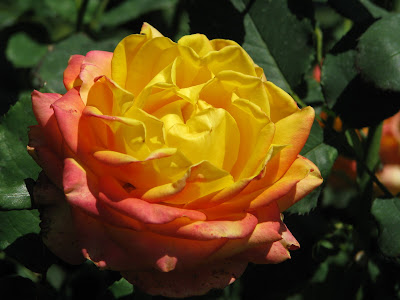Dear Honorable Elected Representatives:
It has come to my attention that Senator Patrick Leahy (D-Vermont) awhile back pushed through a bill designating Lake Champlain, a somewhat large body of water located in his fine syrupy state, as an additional link in the chain of what are known as the Great Lakes: Lake Erie, Lake Ontario, Lake Huron, Lake Michigan and Lake Superior. This despite the fact that Lake Champlain is vastly smaller and separated by hundreds of miles of dry land from the nearest Great Lake, that being Lake Ontario.
By having Champlain designated as a “Great Lake,” Senator Leahy has gained access to funds for the conservation and management of those very Great Lakes for his own state.
I am not complaining. I am not bitter. Nor am I jealous. But I do feel somewhat unjustly neglected, for I too live very near a body of water that I truly believe is an integral part of the major ecosystem known as the Farallones National Marine Sanctuary.
I am speaking of the body of water located in my bathtub.
Renamed “Lake Burchfield,” by me in my honor, this previously unknown, but nevertheless significant, body of water was discovered by me when I took possession of my apartment in June 2002. Located in the rear left of the bathroom, just behind the toilet, Lake Burchfield is six feet long, three feet wide and two feet deep at its deepest. Fed by streams from the High Sierras, it drains into the Pacific Ocean a few miles from my home and hosts a unique ecosystem of extremely rare (and, dare I say, precious) microorganisms of a type and beauty found nowhere else in the entire marine environment.
Shortly after my discovery of this mysterious and complex biosphere I invited a select group of distinguished marine biologists over to study Lake Burchfield. Though they disagree somewhat with the “lake” designation, (Dr. H.P. Heckerbooper, for one, said, “puddle” might be a more accurate appellation) all the scientists firmly agreed that they had never encountered an environment quite like the one encountered in the teeming shallows of Lake Burchfield.
Several newly discovered species have already been written about in numerous distinguished scientific journals (unfortunately of pitifully small circulation), including:
-- the extremely rare Thomas voracious, a bacteria whose diet consists entirely of soap particles
-- Tadus moronicus, a previously unknown genus of mildew, exclusive to plastic white shower curtains
-- and finally, the first sighting ever of the elusive and controversial Circuitous smudgus, the wondrous creature responsible for bathtub ring.
I won’t even go into my toilet, since there’s nothing in there but alligators anyway (and boy do I have the scars to prove it ka-boom!)
In addition, with the help of the experts noted above, I have introduced several endangered species of rare fish into this environment in the hope of restoring their devastated populations for future generations. To date, I have admittedly met with little success, but I am currently working with several marine environmental groups on a proposal to declare Lake Burchfield a major link in a chain of new Pacific salmon runs, provided we can get the fish to swim up the pipes.
In addition, I am currently breeding a unique subspecies of guppy, Invertius poissonus, known for its unique habit of floating upside down for the latter part of its life cycle.
Now: All this takes money and it is with this in mind that I am beseeching you, my elected representatives, for funds to continue my strenuous efforts to preserve, protect and study the amazing, unique hydro-scape that is Lake Burchfield. By designating it as part of the Farallones National Wildlife and Marine Preserve, Lake Burchfield will surely qualify for assistance under the National Sea Grant Program. In anticipation of this qualification, I have registered myself as a University.
Of course, many critics may call this “pork barrel,” but that, of course, is because the money is not going to preserve the wildlife in their bathtubs, which they themselves have never seen fit to pay attention to until I came along. It is in response to these accusations that I solemnly promise to sell Lake Burchfield to the Nature Conservancy upon my departure from this area.
I am in need of funds not only to continue the scientific studies, but also to protect the very environment itself. Already there are threats to build condos along the shiny enamel shores of Lake Burchfield. Indigenous species are under threat from various invasive creatures, including the deadly voracious Billus gatus, a microorganism so vile and pernicious that it has already devoured an entire fleet of plastic boats and neutralizes all dandruff shampoos.
Without funding, I may be forced to sell Lake Burchfield to rapacious developers and the incredible world that lives and thrives within its watery depths will be lost forever to future generations and leave nature a little poorer than I found it.
I am currently in negotiations to rent closet space on K Street and am ready with cash bribes for you to defend my cause! Checks should be made out to “Lake Burchfield Preservation Defense Fund.”
Please help, before, once again, another beauteous pocket of nature is gone for good! Remember: “Extinction is Forever (But Not if You Give Me Money!”)
Sincerely,
Thomas Burchfield
(All photos by author; boat by Elizabeth; cat by Flo)


























